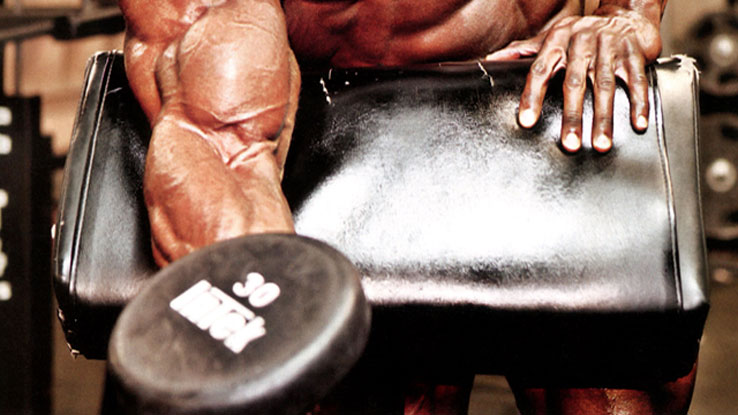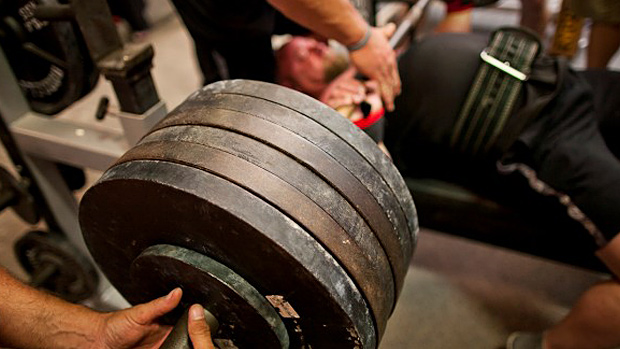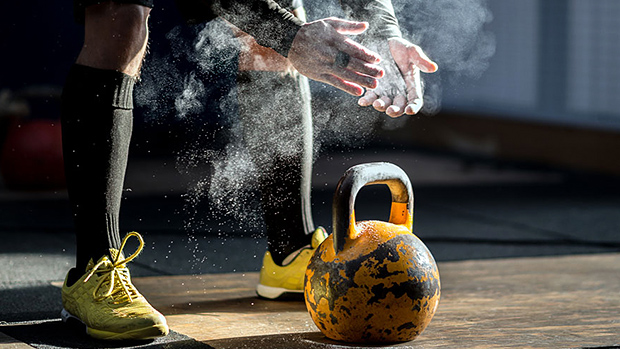Capped delts don't happen by accident. 3D shoulders take years of pressing matched with a relentless volume of isolation work. Try this brutal giant set to destroy your shoulder plateau.
Here's What To Do
Complete in order with no rest between exercises:
- Lateral Raise
- Alternating Front Raise
- Seated Bent Over Lateral Raise
- Dumbbell Upright Row
- Seated Dumbbell Shoulder Press
Choose a dumbbell weight that allows you to complete the five exercises in succession with no rest between exercises. (The order allows different delt heads some rest while others work.) Do 12-15 reps of each exercise for 2-3 total sets at the end of your workout.
Multiple sets will require bigger chunks of rest so take 2-5 minutes between giant sets to attack each round with full intensity.
As you fatigue, you'll be tempted to add momentum with hip or leg drive. Keep body English at an absolute minimum to keep the tension in your delts and ensure you're using the correct load for the giant set.
If you're able to lift your arms at the end of the set, go a little heavier next round. If you needed to cheat your form at any point, go lighter the next round. Just keep it strict.
Got technique questions? Here's a deeper dive into each of these lifts.
1. Lateral Raise
Raise the dumbbells from your sides to shoulder height with no rocking at your hips. Ego-lifting your way through these sets defeats the purpose of accumulating extreme mechanical tension and metabolic stress.
Think about pushing your traps down as you elevate the weights to maximize delt focus. Your upper traps will help out, and you can't isolate them out of the exercise, but try to limit how much they take over.
2. Alternating Front Raise
Raise each dumbbell from your side to somewhere between shoulder or eye level, alternating arms. Hand position can be overhand, underhand, or neutral based on personal preference or to avoid joint discomfort.
3. Seated Bent Over Lateral Raise
Sit on a bench with feet forward and chest on your knees. Raise the dumbbells from touching under your legs to shoulder level and away from you. Allow your shoulder blades to glide forward at the bottom and retract them at the top. You should feel your rear delts plus your middle traps and rhomboids working.
The angle of your movement can vary between slightly in front of your shoulders or slightly behind them, as long as you're feeling your rear delts doing most of the work.
4. Dumbbell Upright Row
Begin with the dumbbells resting in front of your quads. Focus on lifting them toward your face with palms facing you. Elevate with your shoulders but lead with your hands. Allow elbows to follow wrists.
Not everyone tolerates this exercise, especially if forced high and tight under your chin, so allow the dumbbells to follow the path most comfortable on your shoulder joint while keeping tension on your delts.
You can stop the dumbbells at upper-chest height and sweep them apart as you raise them. You should feel tension in your entire shoulder and upper traps. If you're unable to tolerate any variation here, drop them from the set and do an extra giant set to make up the volume.
5. Seated Dumbbell Shoulder Press
You won't need heavy dumbbells after the previous exercises. Find the best pressing angle for your shoulders and work through a range of motion that's below the shoulder socket at the bottom to locked-out elbows at the top. Control the weights through the entire motion. Your shoulders should be fried by the end.
Take the rest you need to attack the next set. Throw 2-3 rounds of this giant set into your shoulder training every few weeks to break up your routine with high intensity volume.




